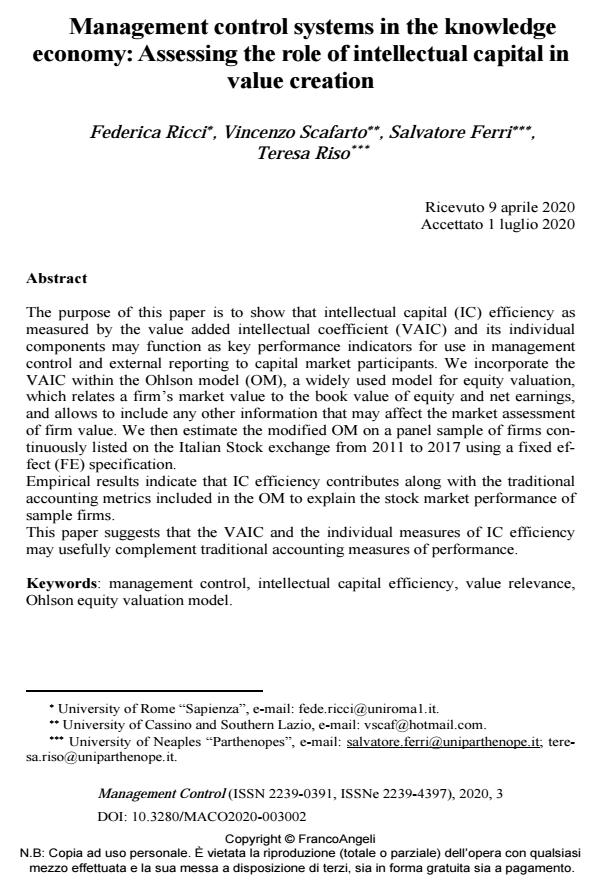Management control systems in the knowledge economy: Assessing the role of intellectual capital in value creation
Titolo Rivista MANAGEMENT CONTROL
Autori/Curatori Federica Ricci, Vincenzo Scafarto, Salvatore Ferri, Teresa Riso
Anno di pubblicazione 2020 Fascicolo 2020/3
Lingua Inglese Numero pagine 18 P. 17-34 Dimensione file 272 KB
DOI 10.3280/MACO2020-003002
Il DOI è il codice a barre della proprietà intellettuale: per saperne di più
clicca qui
Qui sotto puoi vedere in anteprima la prima pagina di questo articolo.
Se questo articolo ti interessa, lo puoi acquistare (e scaricare in formato pdf) seguendo le facili indicazioni per acquistare il download credit. Acquista Download Credits per scaricare questo Articolo in formato PDF

FrancoAngeli è membro della Publishers International Linking Association, Inc (PILA)associazione indipendente e non profit per facilitare (attraverso i servizi tecnologici implementati da CrossRef.org) l’accesso degli studiosi ai contenuti digitali nelle pubblicazioni professionali e scientifiche
The purpose of this paper is to show that intellectual capital (IC) efficiency as measured by the value added intellectual coefficient (VAIC) and its individual components may function as key performance indicators for use in management control and external reporting to capital market participants. We incorporate the VAIC within the Ohlson model (OM), a widely used model for equity valuation, which relates a firm’s market value to the book value of equity and net earnings, and allows to include any other information that may affect the market assess-ment of firm value. We then estimate the modified OM on a panel sample of firms continuously listed on the Italian Stock exchange from 2011 to 2017 using a fixed effect (FE) specification. Empirical results indicate that IC efficiency contributes along with the traditional accounting metrics included in the OM to explain the stock market performance of sample firms. This paper suggests that the VAIC and the individual measures of IC efficiency may usefully complement traditional accounting measures of performance.
Parole chiave:Management control, intellectual capital efficiency, value relevance, Ohlson equity valuation model.
- Cheating in the evaluation. An expedient to estimate the impact of intangibles on the enterprise value of the high-growth start-ups Giulia Cattafi, Giovanna Mariani, Francesco Pistolesi, Domenico Nicolò, in MANAGEMENT CONTROL 3/2024 pp.193
DOI: 10.3280/MACO2023-003009
Federica Ricci, Vincenzo Scafarto, Salvatore Ferri, Teresa Riso, Management control systems in the knowledge economy: Assessing the role of intellectual capital in value creation in "MANAGEMENT CONTROL" 3/2020, pp 17-34, DOI: 10.3280/MACO2020-003002